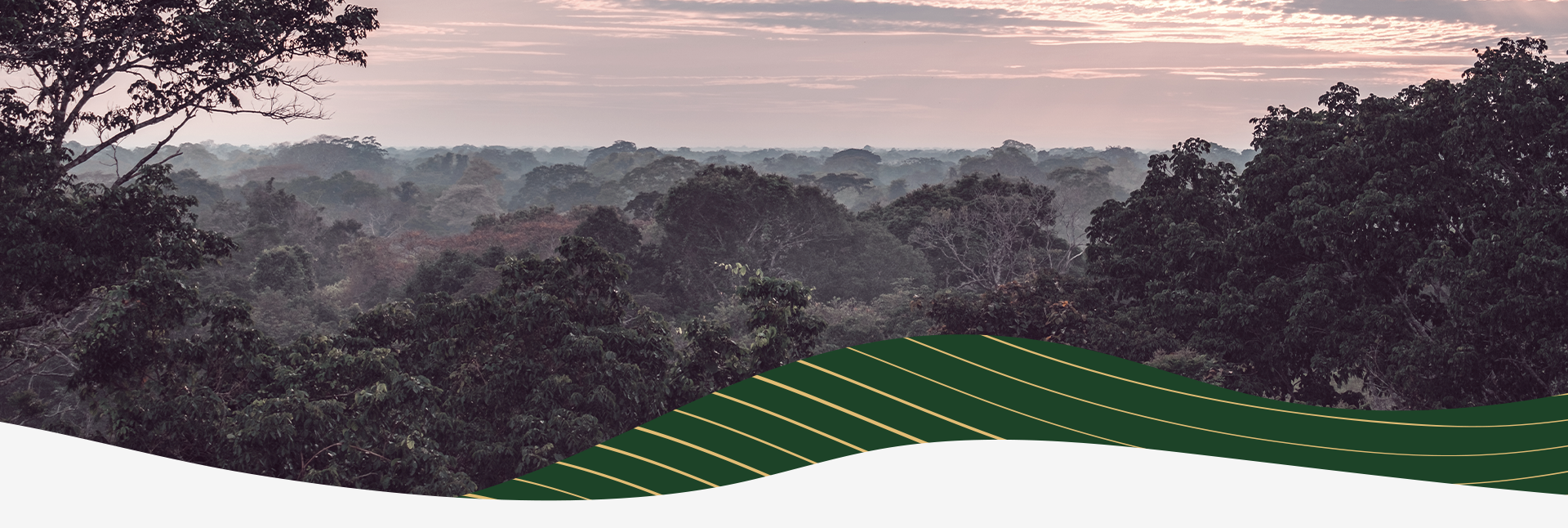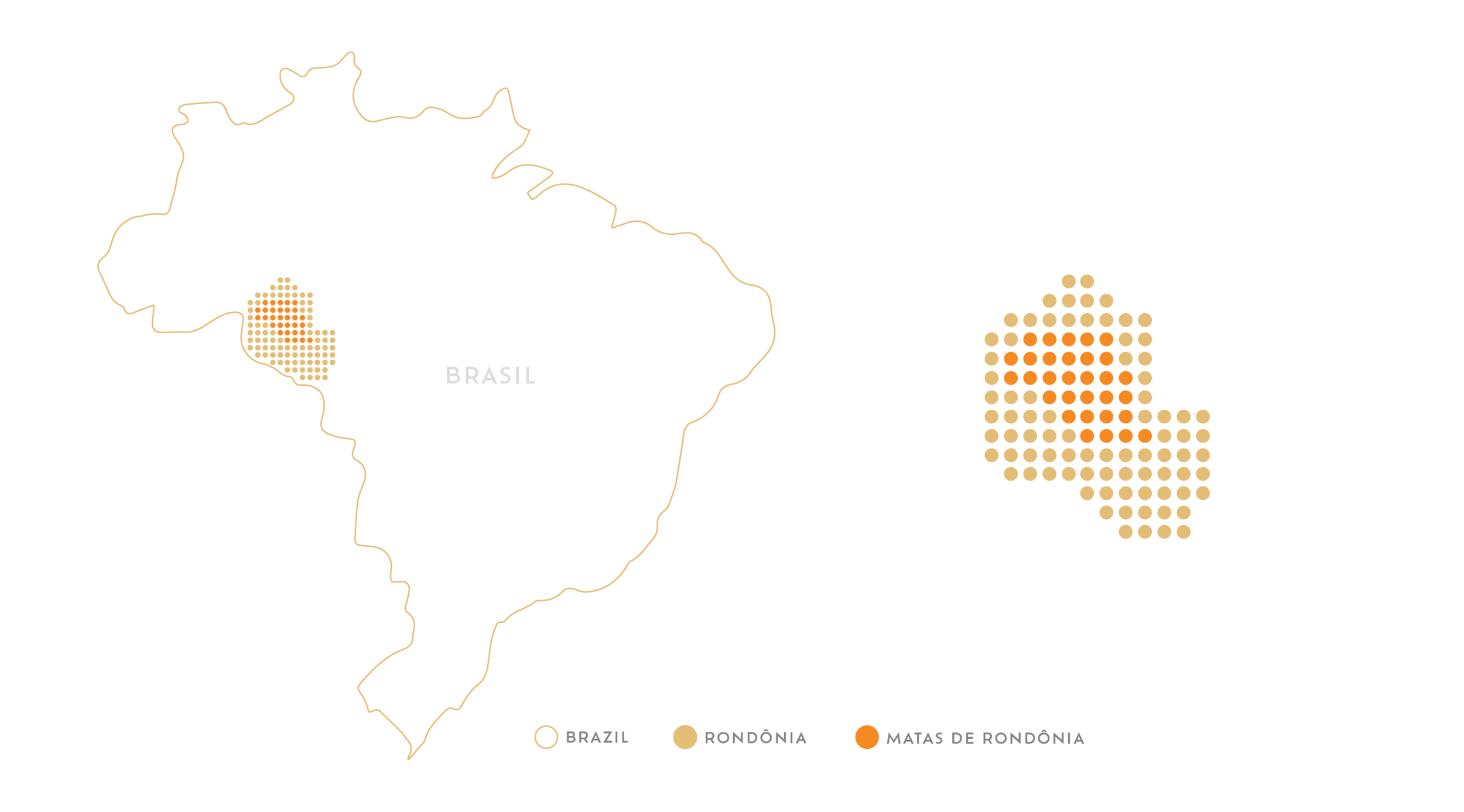mATAS DE RONDÔNIA
The Matas de Rondônia is a Robusta-producing region located in the Amazon Rainforest, specifically in the southeast of the state of Rondônia. While the region has been producing Canephora—commonly called Robusta coffee—since the 1980s, it has recently focused on sustainable production of high-quality Fine Robustas.
This sustainability mission is needed now, more than ever. Long sparsely inhabited by myriad indigenous tribes such as the Wari, Suruí, Cinta Larga, Arara, Nambikwara, and Paresi, among others, the Brazilian government for many years encouraged migration from population centers along the coast into the Amazon. In 1960, construction was completed on the Cuiaba-Porto Velho highway to encourage agriculture and industry, and in the 1970s the Federal government enacted a homesteading initiative, offering free land to those who would cut down the forest and plant crops or raise cattle. However, in the last decade Rondônia has been recognized as having one of the highest rates of deforestation in the world with the rapid rise of soybean and cattle activities.
Growing coffee, which is a perennial undergrowth tree, helps to combat this rapid deforestation by providing a viable alternative to agricultural activities that require deforestation. As the world demand for Robusta coffee increases, the Matas de Rondônia Coffee Growers Association (Associação dos Cafeicultores da Região das Matas de Rondônia), or Caferon, seeks to differentiate themselves through sustainable practices that combat deforestation and preserve the soils and waterways of the Amazon.
Their focus is also on the production of high quality Fine Robustas. Since its commercial introduction in the late 1800s due to its resistance to coffee rust (Hemelia Vastatrix), Robusta has largely been used as a cheaper and lower-quality alternative to Arabica coffee. Where Arabica prefers higher altitudes and cooler temperatures, Robusta, native to the Congo River basin, thrives in tropical jungles. Low-grade Robusta has long been used for soluble coffee and as a low-cost component of lower-quality commercial grade coffees, but it has also been a key blend component of many Italian and other European espresso blends, providing body and crema. Recently there has been a movement toward quality Robustas similar to the movement in Arabica towards Specialty Coffee.
Fine Robustas from Matas de Rondônia are full-bodied coffees with flavors of chocolate and nuts.
In the 1970s, the wave of migration from the south to Rondônia saw the introduction of the Arabica coffee plant. However, given the stark difference in climate, the plant was not successful. In the 1980s, Canephora was brought from Espírito Santo as well as from the Campinas Agronomic Institute (Instituto Agronômico de Campinas) and Embrapa (which has continuously worked to further develop the genetics for productivity, disease and pest resistance, and cup quality). Along with their initiative towards sustainability, Caferon has chosen to focus on the production of Fine Robustas and has included quality standards in their certification program. Fine Robustas are coffees that score above an 80 in flavor attributes—meaning they present a smooth flavor with less bitterness—and meet green coffee physical analysis standards.



